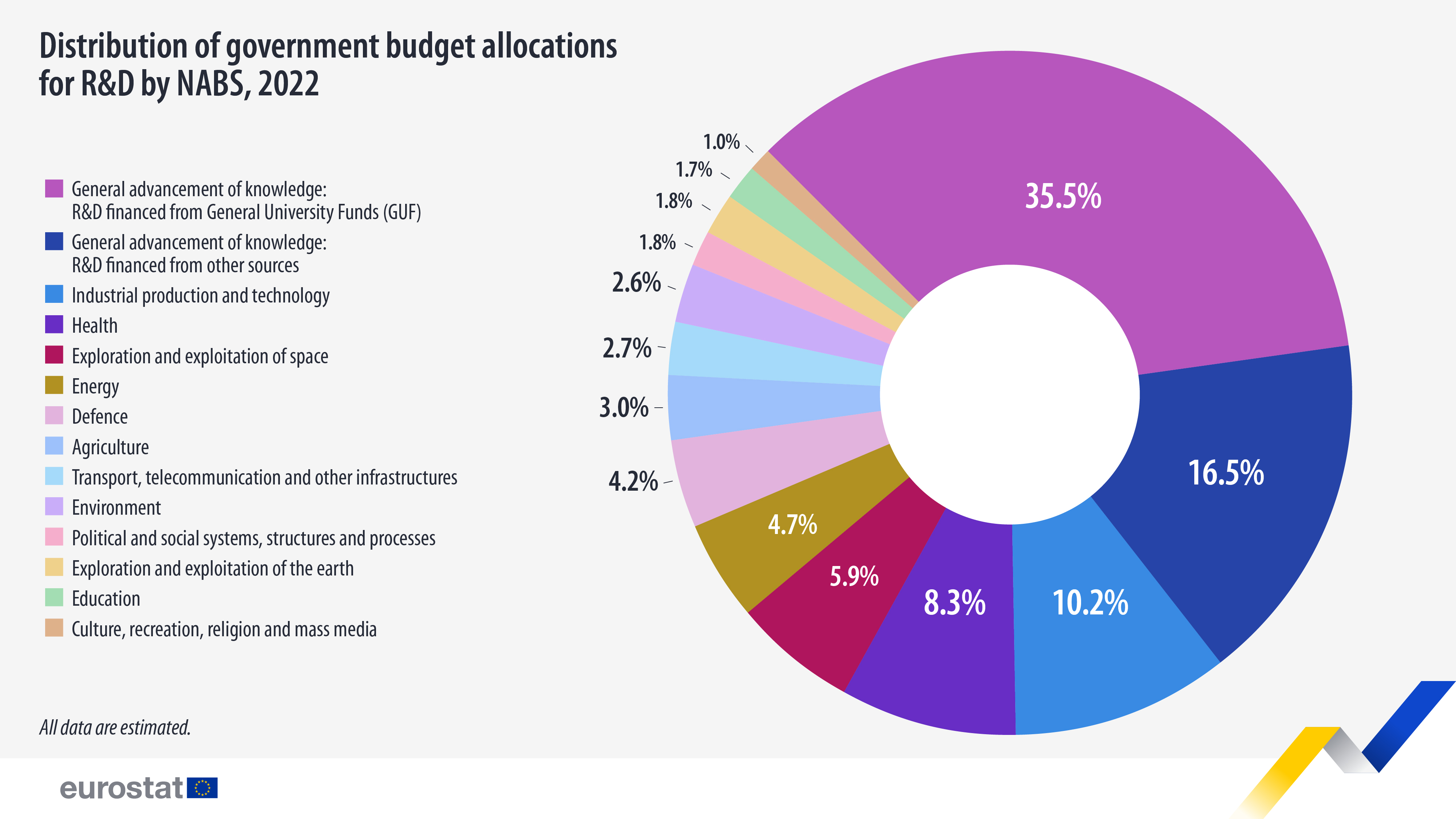EU governments increased R&D allocations by 5% in 2022

In 2022, the total government budget allocations for R&D (GBARD) across the EU stood at €117 368 million, equivalent to 0.74% of GDP. This was a 5.4% increase compared with 2021 (€111 393 million) and a 49.2% increase compared with 2012 (€78 656 million).
This information comes from data on government budget allocations for R&D (GBARD) published by Eurostat today. The article presents a handful of findings from the more detailed Statistics Explained article.
Source dataset: gba_nabsfin07
In 2022, government budget allocations for R&D at the EU level stood at €262.7 per person, a 47.2% increase compared with 2012 (€178.5 per person). The highest allocations were recorded in Luxembourg (€661.6 per person), followed at a distance by Denmark (€529.1) and Germany (€517.6).
On the other hand, EU countries with the lowest R&D budget allocations per person were Romania (€17.6 per person), Bulgaria (€27.3) and Latvia (€49.6).
Between 2012 and 2022, all EU governments increased their budget allocations for R&D in terms of € per person. The largest percentage increases were recorded in Latvia (+208% from €16.1 per person in 2012 to €49.6 in 2022) and Greece (+129% from €66.0 to €151.2). Sweden registered the lowest percentage increase in this reference period (+4% from €377.7 to €391.6).
General University funds receive almost 36% of allocated budgets for R&D
Statistics on GBARD provide an insight into the different public R&D funding activities and are linked to policy issues by means of classification by "objectives" or "goals" (NABS 2007).
In 2022, the biggest share of the government budget allocations for R&D, namely 35.5%, was directed to the general advancement of knowledge financed in a large majority by a public block grant known as public general university funds (GUF), which many public higher education institutions receive to support all their activities. Next, the allocation of 16.5% of the GBARD was earmarked for the general advancement of knowledge from other sources than GUF, followed by 10.2% to industrial production and technology, 8.3% to health and 5.9% to exploration and exploitation of space.
Although the most representative objectives in 2022 are the same as in 2021, a significant increase was observed in defence, from 2.6% in the previous year to 4.2% in 2022.
Source dataset: gba_nabsfin07
R&D is crucial to many European and national-level policies that aim to increase the competitiveness of the EU’s economies and the welfare of its citizens. R&D was put forward as a driving theme in the Political Guidelines for the next European Commission from 2019 to 2024.
For more information
- Statistics Explained article on government budget allocations for R&D (GBARD)
- Thematic section to science, technology and innovation
- Database on government budget allocations
Methodological notes
- Denmark: data are estimated. Austria: definition differs.
- 2022 data on government budget allocations for R&D presented in this article are preliminary and might therefore be revised. Following the calendar for the transmission of data, updated figures will be published in January 2024.
- Government budget allocations for R&D are all allocations assigned to R&D in central (federal) government, regional (state) and local (municipal) government. They, therefore, refer to budget provisions, not to actual expenditure. Local government budget funds may not be included if their contribution is not significant or if the data cannot be collected
If you have any queries, please visit our contact us page.


